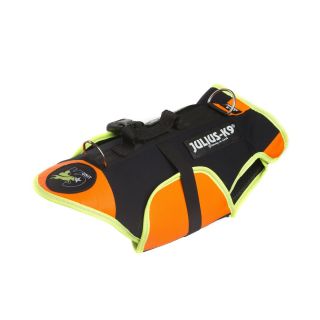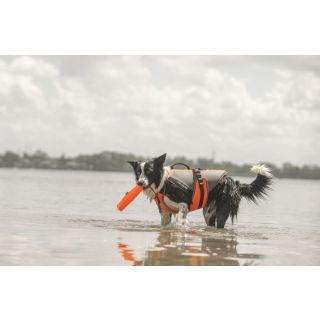Swimming is a great activity for dogs and most breeds love being in the water. Swimming is also fantastic exercise for canines. It helps improve their cardiovascular health, strengthen their muscles, and boosts circulation.
On warmer days, letting your dog off lead to jump into a pond or lake is a nice treat and is an excellent way for them to expel energy. But there are a few things you should keep in mind for your dog’s safety.
There also might be restrictions in place for certain bodies of water or wildlife conservation areas you should be aware of.
See our tips below to safely and legally let your dog swim in the wild in the UK.
General safety tips and advice
- Strong currents and tides. You should only let your dog swim in calm waters. Even a small current can cause strong swimmers to struggle.
- Supervise your dog at all times. Never leave your dog unattended in the water, even if they are experienced in the water and the water looks calm.
- Your dog should know basic commands. It’s extremely important for their safety and others that you can recall them when you need to.
- Consider using a long lead. A long waterproof lead will stop your dog from adventuring too far and potentially getting into trouble.
- Dog life jackets. Even if your dog is a strong swimmer you should consider making your dog wear a life jacket. The JK9® Multivest has removal flotation pads which function as swimming aids and doubles as a water resistant vest.
- Don’t swim after flea treatment. If you use spot on flea treatments on your dog, then you shouldn’t let them swim for several days after application. The treatment can wash off and contaminate fragile ecosystems in ponds, lakes and wetlands.
- Water temperature. If the water is too cold for you, then it’s too cold for your dog. Temperatures below 10 degrees can be problematic for long swims, as the dog’s body temperature can get too low and even cause hypothermia.
- Dry off your dog. On hot summer days your dog might enjoy staying wet to cool off. But be mindful that smaller breeds are likelier to feel the cold more and struggle to warm themselves with wet fur, especially if there is a breeze or they’re in the shade. Keep in mind that wet fur can also make all dogs susceptible to hypothermia.
Lakes, Rivers and Ponds
Some dog owners make the mistake of thinking lakes, rivers and ponds are a safer spot for wild swimming compared to the ocean. But there are still many hazards that all owners should be aware of.
- Trees, branches and other debris. Avoid water areas with floating debris. These can harm your dog or impeded their swimming.
- Be wary of fly tipping. It can be difficult to know what rubbish is lying just under the water’s surface. Be cautious of these hazards in murky water.
- Check restrictions. Always check to see if dog swimming is allowed. Some rivers, ponds and lakes do not allow wild swimming of any kind. These restrictions could be in place for your dog’s safety, or the safety of wildlife.
- Check for blue green algae. This is dangerous bacteria that can be found in still or slow-moving water. It can cause serious organ damage and even death. See PDSA’s informational article on blue green algae for more information.
Sea swimming
There are many dog friendly beaches across the UK which provide a safe environment for your dog to swim. But just because it’s known as dog safe, it doesn’t mean you shouldn’t be cautious.
Always check that sea conditions are safe before letting your dog in the sea. Beaches often have warning flags indicating if conditions are too dangerous to swim. However, not all beaches are manned all the time, so you should be vigilant to the size of the waves and how strong the current is.
You should also always check tide times. This can be easily done via the tidetimes.org.uk website.
What if your dog drank sea water?
Sea water is bad for dogs. If they drink too much it can cause:
- diarrhoea
- vomiting
- dehydration
If they have drunk sea water then you should:
- Provide them with fresh drinking water. This will help flush out the salty sea water from their system.
- Monitor your dog for signs of dehydration. Symptoms include excessive thirst, dry gums, and lethargy.
- Keep your dog cool. As salt water can dehydrate your dog, it’s important to keep them cool. Give them a cool bath, fan them, and keep them in the shade.
- No food or treats. It’s important to hydrate your dog. Giving them food can cause them to vomit after drinking salt water and lose more fluids.
If you’re worried that your dog has become severely dehydrated, you should call your veterinarian.
UK law and restrictions
There is not a specific law in the UK which prohibits dogs from wild swimming. However, local councils will have their own restrictions in place that cover certain areas.
These include not allowing dogs in:
- lidos and public swimming pools
- canals
- reservoirs
- conservation areas
- protected wildlife parks, rivers and wetlands
Some lakes and rivers which prohibit dog swimming have dedicated ‘dog dip areas’ for this purpose.
Restricted areas are usually signposted, but you should check your local council website to see where they are and what the specific restrictions are.
Dog swimming accessories
Here at JULIUS-K9® UK, we have a range of dog swimming accessories which have been developed to help your dog enjoy the water safely.










